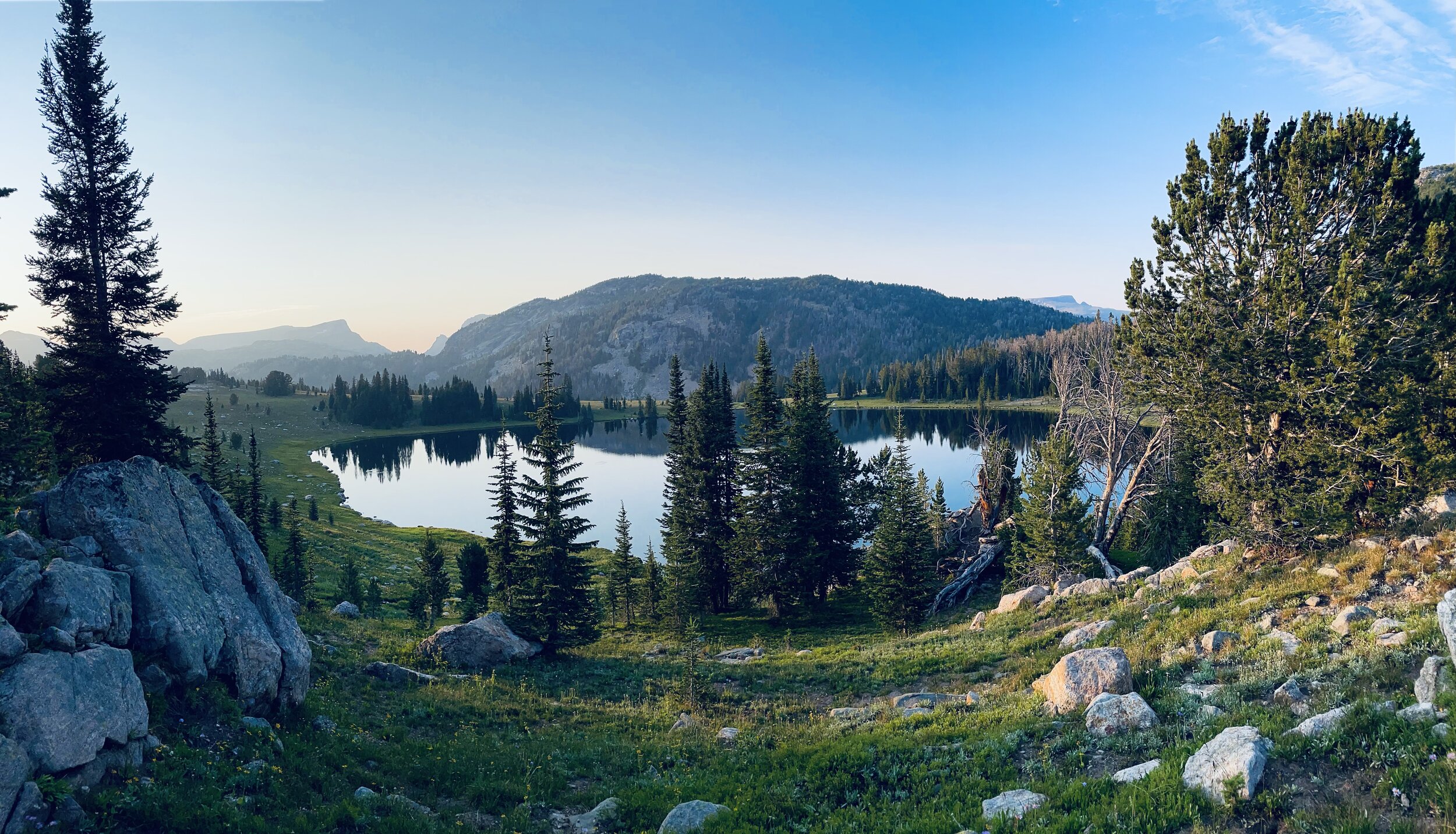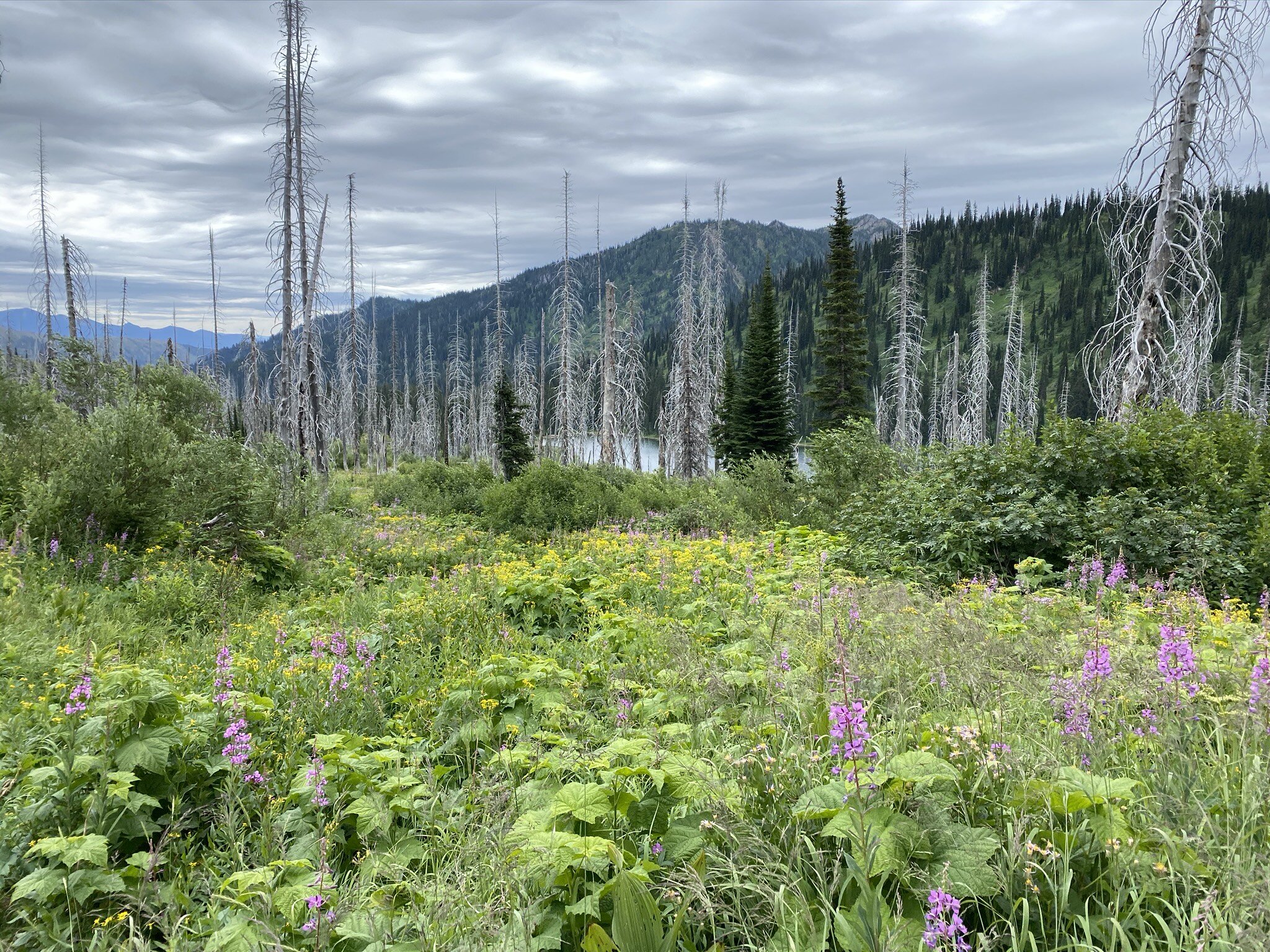Grizzly Bear Sightings On the Rise
Across Montana
Written By Amy Grisak
Photography Ami Shetler and contributed
If you see a grizzly sauntering across a wheat field outside of Big Sandy or playing with a flag on the greens of the Marias Valley Golf & Country Club in Shelby, rest assured, you are not crazy. Moving from their long-held mountain stronghold more bears are heading to the eastern plains they once called home. While the recovery of the grizzly bear is one of the great conservation success stories, it’s not without conflict, particularly when cows, sheep, and humans inhabit the same area.
“We’ve had bears show up at Big Sandy, the Big Snowies, the Little Belts, Highwoods, down the Teton (River), down the Marias (River), and they showed up in the Upper Missouri Breaks this year,” says Wesley Sarmento, grizzly bear management specialist for Montana Fish, Wildlife & Parks. Residing in Conrad, Sarmento is the balance between understanding local issues and the dynamics of a complex ecosystem, particularly when it comes to grizzly bears.
According to Sarmento, the primary reason bears are moving eastwards is the Northern Continental Divide Ecosystem, which holds approximately 1000 bears, has reached its carrying capacity. “We’re seeing a lot of sub-adults who are dispersing,” he notes.
“We started noticing grizzly bears about 10 years ago. This year we’ve had two confirmed calf kills.”
When young bears are evicted from their mother, they’re forced to seek out their own territory. In this case, with the healthy population in their previous home range, they venture into areas where they might run into more people. The problem is these sub-adults can often behave like teenagers whose frontal cortexes are not fully developed, yet they are on their own to make adult decisions. They are curious, yet without much life experience, so it’s understandable that they sometimes find themselves at odds with agricultural producers and homeowners.
“Certainly, getting into grain spills is a major issue,” says Sarmento, along with killing chickens, sheep, and cattle. It’s the latter two issues that hit home with a lot of producers.
For Amber Mason and her partner Andy Peterson, herdsmen who run cattle on a Forest Service lease in the south end of the Gravelly Range in Southwest Montana, dealing with grizzly bears is part of their daily life while out on summer pasture.
“We started noticing grizzly bears about 10 years ago,” says Mason who grew up in Virginia City and has been working on the ranch for 14 years. “This year we’ve had two confirmed calf kills.” Yet, with August being their most intense month for predator pressure in their area, she is nervous about potential kills.
Based on her own hypothesis, which makes logical sense, Mason says, “I think (they take more cows in the summer) because they hit hyperphagia and start worrying about stocking up and getting those calories.” Whatever the reason, in some parts of Montana, summer, instead of calving season, is when there is increased bear predation.
It’s a different situation in the Gravelly Mountains than in some areas where it’s not only sub-adults running into issues with livestock producers. Mason says one year there was a sow with ear tags and two cubs. “She would hang out right below our camp, and was not fazed by anything,” she says.
In another instance, with many mouths to feed, another sow with three cubs killed a calf roughly every three to four days. Even though they didn’t catch her killing a calf on camera, the footage showed her on every single kill. “She was very strategic,” says Mason, “And, she’s teaching her cubs.”
The reality is anyone living and working in bear country needs to be aware and modify their behavior in order to remain safe. For those living in the country, this might mean pulling in bird feeders, not leaving trash cans out, or using electric fence around the chickens.
For Mason, it means that she and Peterson no longer separate for fencing jobs or other tasks, and they are accompanied by members of the nine-dog pack that are their ears and noses in the allotment. Even so, she says they still see and run into bears, but they do their best to avoid conflict.
Mason also packs bear spray as her personal defense preference. She rides many of the colts she’s training, which she jokes may not be the smartest thing to do when regularly dealing with bears, but if they buck her off, bear spray on her hip makes more sense.
“Last year we cleaned up 27,000 pounds of spilled grain to keep bears away.”
Part of this frustration for producers derives from dealing with multiple federal and state agencies. Because grizzly bears are still a federally protected species under the Endangered Species Act, they are under the jurisdiction of the U.S. Fish & Wildlife Service. Sarmento says if it is a livestock predation issue, the lead agency is USDA Wildlife Services, and while Montana FWP assists with the situation, it’s USDA Wildlife Services who sets the traps when livestock is involved. In the case of reoccurring predation or a threat to humans, Hilary Cooley, USFWS grizzly bear recovery specialist makes the final call to euthanize the bear.
When a cow or sheep is killed, USDA Wildlife Services and FWP co-investigate whenever possible. “We basically look for evidence to see if it was killed by a bear, wolf, or lion. We look for bite marks with hemorrhaged bleeding, which shows that it was still alive.” After recording the evidence, including measuring bite marks and tracks, it is turned into the Livestock Loss Board. Once confirmed, USDA Wildlife Services can set a trap, yet still need approval to remove or relocate a bear.
Sarmento says FWP handles situations when bears come into town or are around houses. “A lot of folks think it’s within our authority to start a hunting season or to euthanize any bear,” says Sarmento. It’s not. This is only possible if grizzlies are delisted allowing the state to have full management responsibility.
Mason, has long sought ways to better understand bear behavior and ways of protecting their herd and themselves. While she is highly cautious, she is equally fascinated with grizzlies and has observed distinct difference in personality types over the years. She says the introvert bears tend to stick to the edges and stay out of trouble. They’re there, but not in your business. The extroverts, on the other hand, seem to have the attitude, “I know what I want, and this is how I’m going to get it.” She says those are the ones perpetuating massive problems.
This is a point of contention coming from someone tending cattle in the heart of grizzly country. “Let the bears that aren’t doing any problems, let them alone,” she says. But she believes there needs to be greater latitude to deal with the ones who aren’t keeping to themselves.
One of the potential tools to help manage bears better locally is delisting them as a federally protected species. When the Greater Yellowstone Ecosystem petitioned to be delisted, the USFWS was sued, partly because other grizzly populations, such as the ones in the Bitterroot, Cabinet-Yaak, Selkirks, and Northern Cascade Mountains do not meet the population parameters for such action. At this point, it seems to be an all or nothing proposal.
If grizzlies were delisted, Sarmento says FWP would have local control so they wouldn’t have to ask permission to move or euthanize a problem bear. “We could also look at a hunting season to manage the population and distribution,” he notes. “There would still be very strict limits in population and habitat protection in the primary conservation area.” But he says FWP could be more aggressive in areas of potential conflict.
“I think it also helps build tolerance and an appreciation for the species,” he says.
In the meantime, FWP does its best to keep people safe. Because young bears are some of the biggest offenders in Sarmento’s area, he regularly hazes bears using everything from cracker rounds to beans bags. “It’s to teach them to be afraid of people,” he says.
“The next thing we do is to help folks secure attractants,” Sarmento says. Besides recommending people to take down bird feeders, lock garbage inside, and place feeders/mineral out in the open, he says they often help clean up grain spills with the agency’s specialized vacuum.
“Last year we cleaned up 27,000 pounds of spilled grain to keep bears away,” he says.
“We build a lot of fences,” Sarmento notes. With the financial help of FWP and USDA Wildlife Services, producers can greatly the cost of materials and labor.
It’s not as pleasant as sucking up grain, but Sarmento says, “We also remove a lot of carcasses that are an attractant that brings bears close to humans and livestock. Last year, they took away 150 dead animals
In areas where bears frequent, such as along the Front including Valier and Choteau, they have an alert system when a bear is seen in the area. This might include a mass automated calling or a phone tree.
“We do what we can to help people as much as we can,” says Sarmento.
Grizzly bears often garner equal measures of fascination and fear, but by balancing these emotions with science and practicality — with an equal measure of respect — it is possible to figure out how to share the landscape we all call home.





